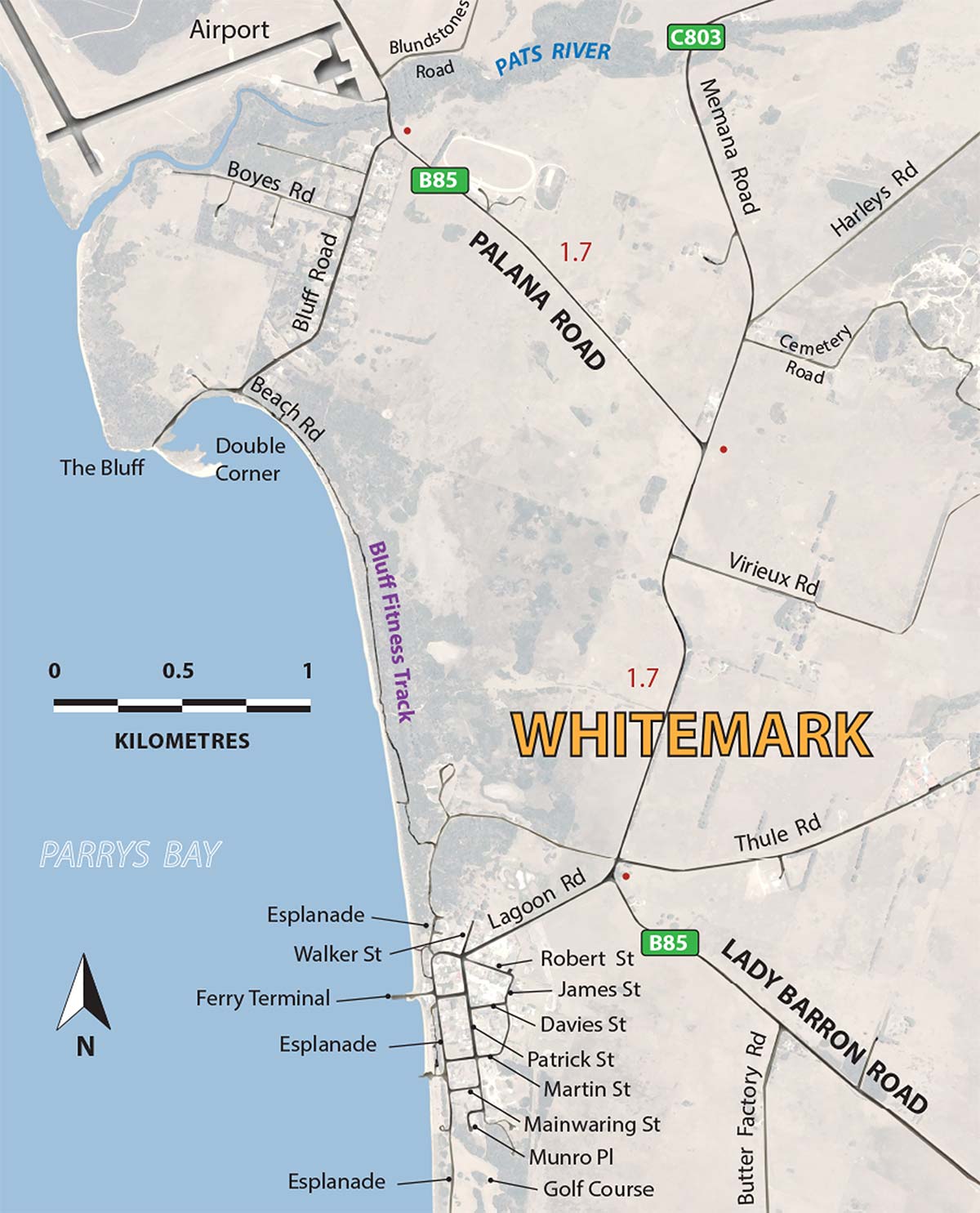Whitemark traces its origins back to the late 1880s when survey work commenced in order to open Flinders Island up to closer settlement.
At that time this local area was called Camp no. 6 by the kangaroo hunters. While we can’t be certain, it seems that the surveyor set up a prominent white reference marker on the shoreline across from this camp.
On a shoreline lacking navigational aids, this ‘white-mark’ became a defining feature helping guide small craft in and around this locale.
Connections to Country ...
For many thousands of years prior to the sea levels rising and creating the Furneaux Group of islands, Aboriginal people cared for Country here. Today these cultural connections are ongoing. Tasmanian Aboriginal People welcome you to this place and ask that you respect its cultural heritage.
We can get a good idea of why Whitemark was always a popular place from a section of an 1893 map of the south west section of Flinders Island.
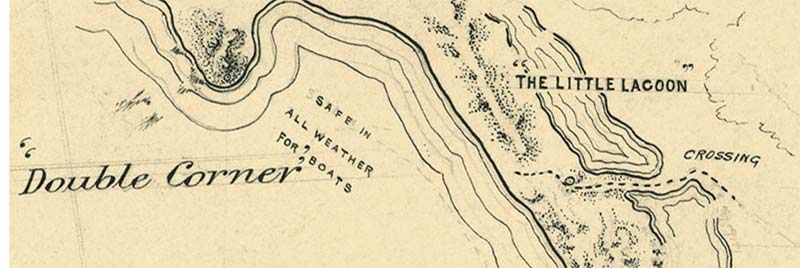
Not only does it mark the Double Corner harbour as being “safe in all weather for boats”.
It also indicates the natural crossing point here that provided access inland across the coastal lagoons. When the residents of the surrounding offshore islands travelled here to harvest essential firewood and timber, they could easily load up at the ‘white-mark’.
The town as we know it today started to take shape in the early 1900s when urban blocks were laid out and a wharf was constructed here.
This occurred in spite of the fact that shallow waters offshore made it difficult for cargo vessels to dock here.
It seems that the increasing use of propeller driven, shallow bottomed coastal craft came at an opportune time for the early development of Whitemark as a major island transport hub.
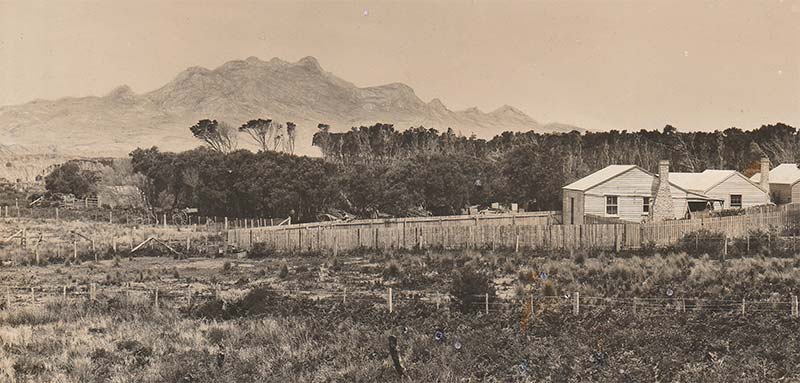
Many of the major buildings we see around us today in the town date back to the surge of investment that accompanied the construction of these wharf facilities.
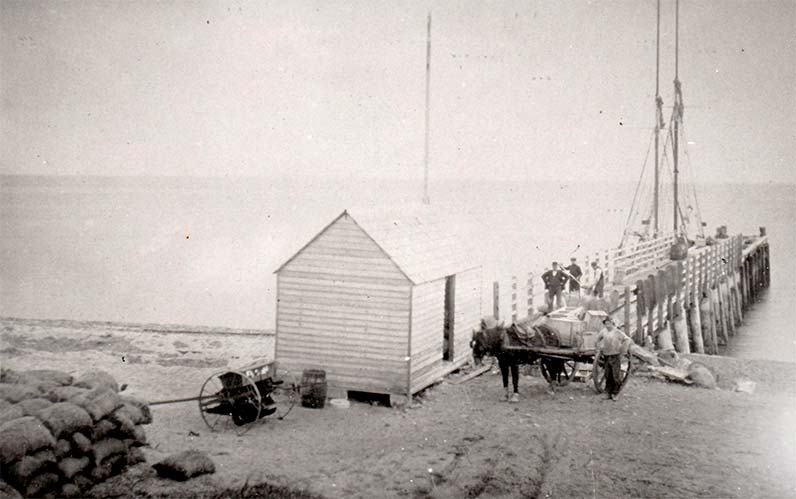
Stroll around the town ...
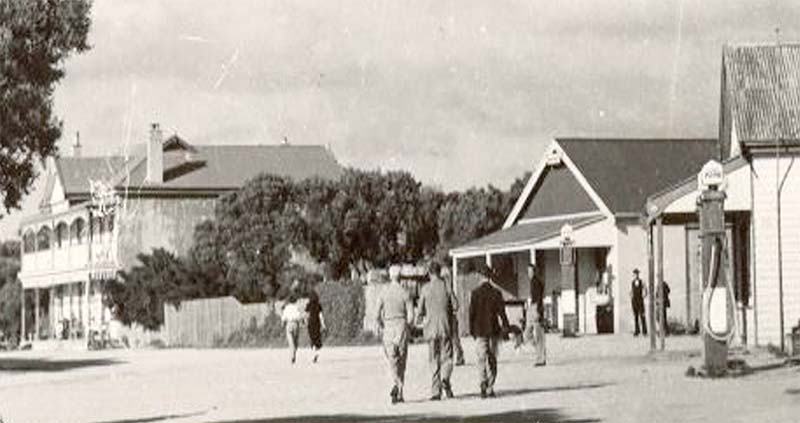
A walk around Whitemark has long been top of the Flinders Island ‘must do’ list. Alongside the state and local government services based here an array of small businesses welcome you to share in their slice of island life.
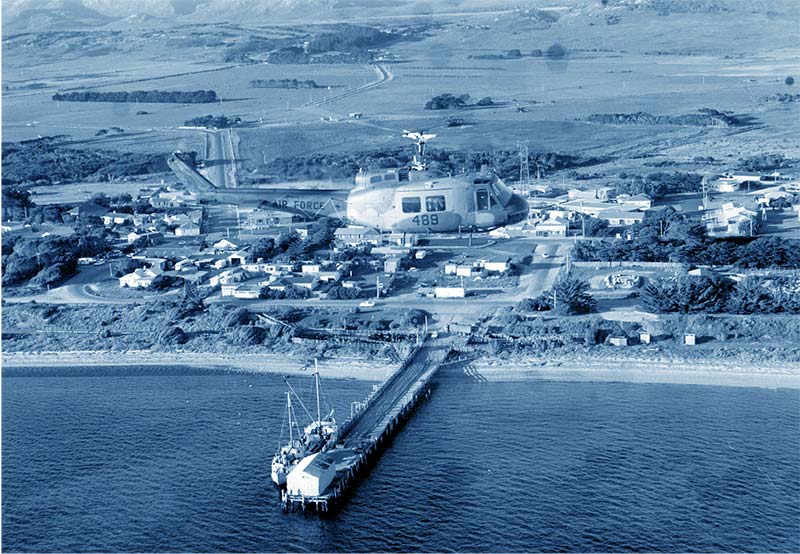
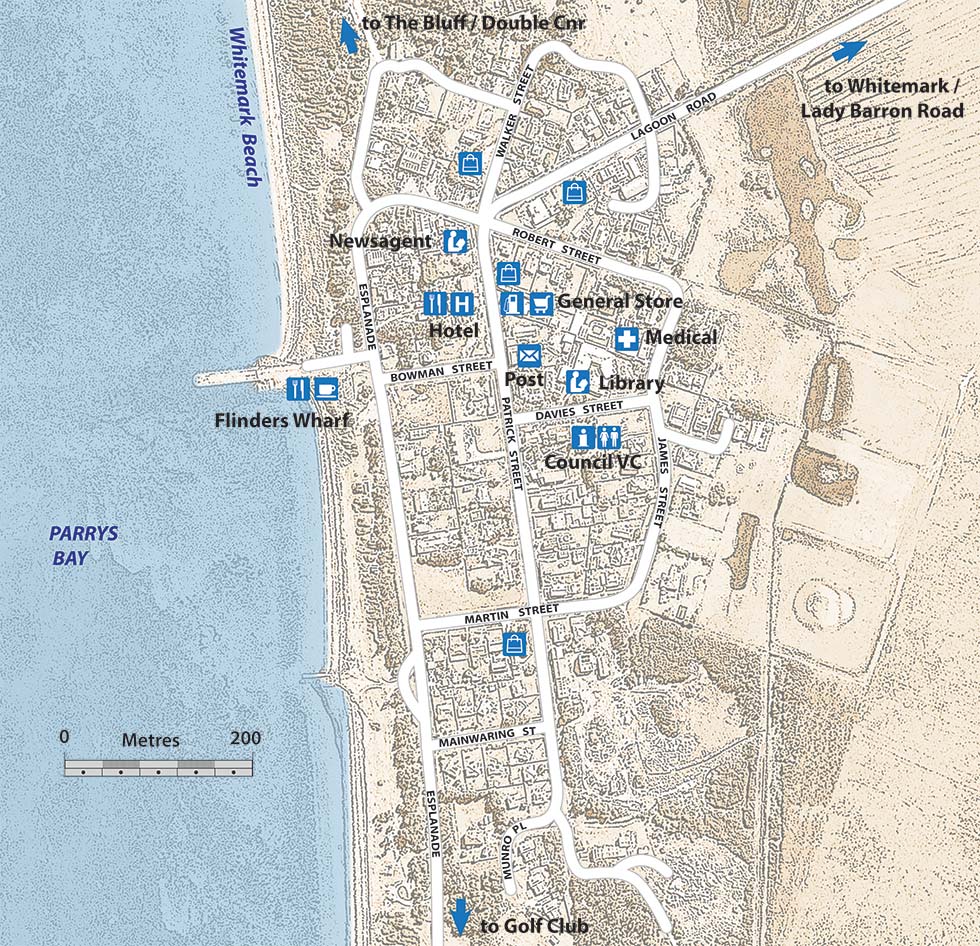
The Walkers
In 1900 Harold Jeff Walker took up the land immediately adjacent to the spot (the white mark) where people from the outlying areas came to cut wood and built the first store in conjunction with his house. The Interstate Hotel was built in 1911 and has been in the care of the Aitken family since the early 1940’s.
In 1912-13 a Courthouse was built, which is now the Furneaux Gallery. A Municipal Council was elected and used the Courthouse for Council meetings. At the same time 1912-13 H.J. Walker built a large new general store on the corner of Robert and Walker Streets. He also became the Postmaster, and the Post Office was established in this building.
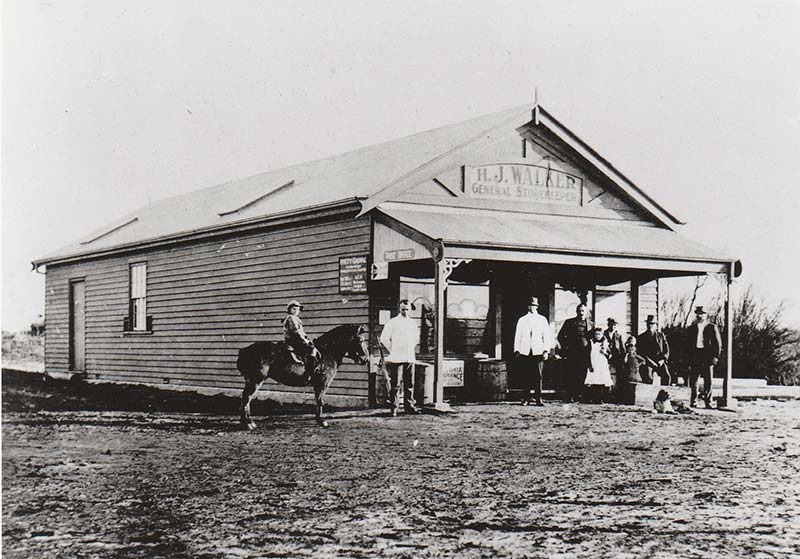
To Save A Penny
During this period also, the morse code radio station was built at Settlement Point. It was for the transmission of morse code messages and the people of Flinders Island were permitted to send telegrams for two shillings for 16 words and a penny halfpenny for each additional word. It was during this early period when H.J. Walker was Postmaster the name White Mark was joined together to make Whitemark. When sending a telegram, the name and address of the sender had to be included and by making Whitemark one word, it only cost a penny halfpenny instead of threepence.
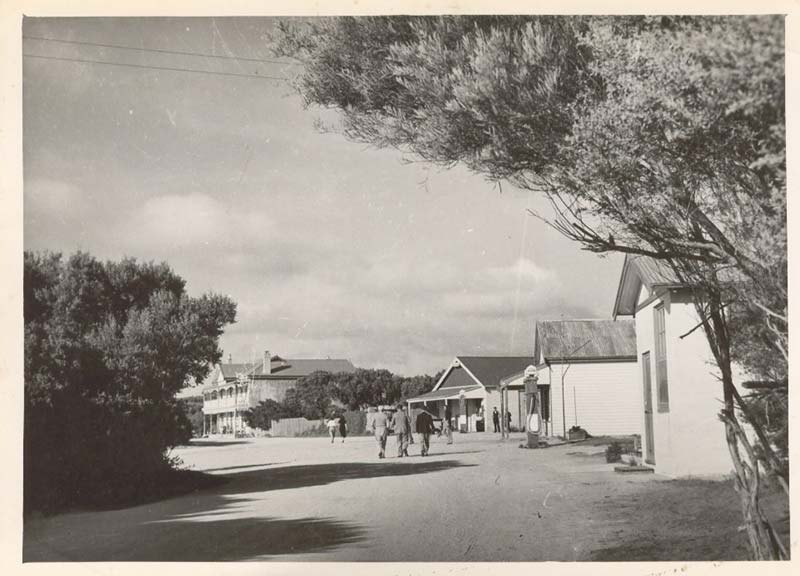
How Things Have Changed
Leedham Walker Senior saw a lot of changes in his 90 plus years. None more so than in the retail industry. Early one morning a youngster, a Mr Smith of North East River galloped into the yard at Whitemark on a large white horse. Leedham’s father, Mr Harold Walker had just recently issued the first ever written accounts on Flinders, from his shop in Whitemark. Mr Smith was very indignant and offended. Shaking the document, he said “Walker, I always know what I owed and don’t need to be told: especially on paper.” He would not dismount for a cup of tea and headed straight back to North East River.
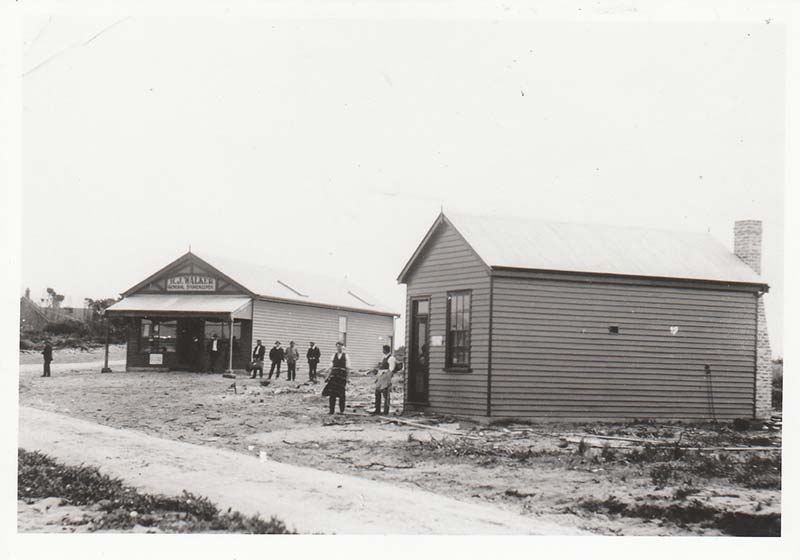
Bowman’s Story
In 1913 Daniel Thomas Bowman came to the island from Melbourne. After selecting a block near Nelson’s Lagoon, he worked to develop the virgin country until enlisting in WW1 in 1915.
He returned with his wife Maud in November 1919, but times were tough, and they considered returning to Victoria. However, they decided to try their luck at commerce by building a 26-foot square building of four rooms with the front room being the store and post office. Selling everything an isolated farming and fishing community might need it has been rebuilt, first in 1935 when the house was extended and in 1954/5 when the storeroom was added, and the current shop built.
Bowman History Room
The room was created in 1996 to celebrate the 75th anniversary of the Bowman family business which was established in 1921. This amazing collection of shop items, photographs and account books from 1921 onwards traces the growth of one family and their business and also the development of the town of Whitemark and Flinders Island as a whole. You will find catalogues and account ledgers that depict a vastly different world to the one we live in today. Memories will flood back for older generations, while younger generations will wonder how people survived without modern conveniences.
Blundstone Story – Boot Anyone?
John and Elizabeth Blundstone arrived in Hobart in 1855. John was a coachbuilder until 1870 when he started importing footwear, and soon afterwards starting manufacturing boots under the family name in Hobart. John and Eliza had five sons. One of the younger sons, John Edwin, came to Kangaroo Island in the 1880’s after a terrible tragedy struck the Harley family during the mutton bird harvesting season. Three brothers drowned when their boat capsized carrying supplies to the birders on Chappell Island. Charles, the eldest of the three, left four daughters and a toddler son on Kangaroo. John Edwin Blundstone arrived to help tutor the five children and a young niece, Vida, born after the drowning of her father, David.
John married the eldest of the girls, Maude Kathleen, in 1898. John bought out his widowed sister-in-law’s properties in about 1920 after the death of her husband, Harold Walker. The purchase included the general store, butcher’s shop and family home, Wakeh Lenna, which was then owned by the Blundstones for nearly 70 years. The house is at the end of Walker Street and is once again owned by a descendant of Harold Walker. Blundstone’s General Store was arsoned in the mid 1950’s soon after it was sold to the fir Farmer & Graziers (rural suppliers). It was not unlike the Bowman’s Store, across the road, selling some food, clothing, material outdoor equipment etc, and bowser fuel for vehicles at the time of the fire. They were also an agency for insurance policies. John Blundstone’s sons all became farmers managing several family properties after their father death in 1929. Joh was also the Flinders Island council clerk during his lifetime.
